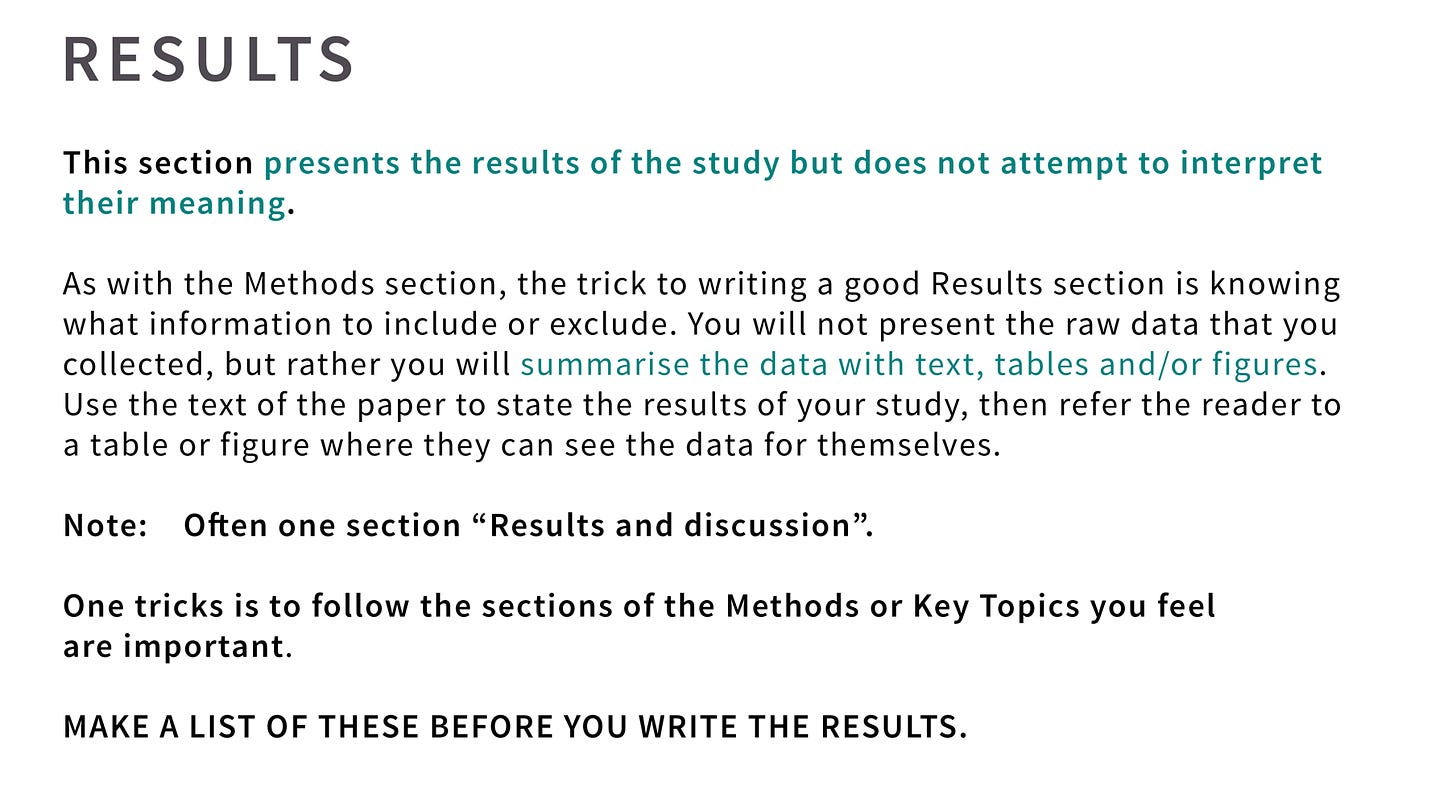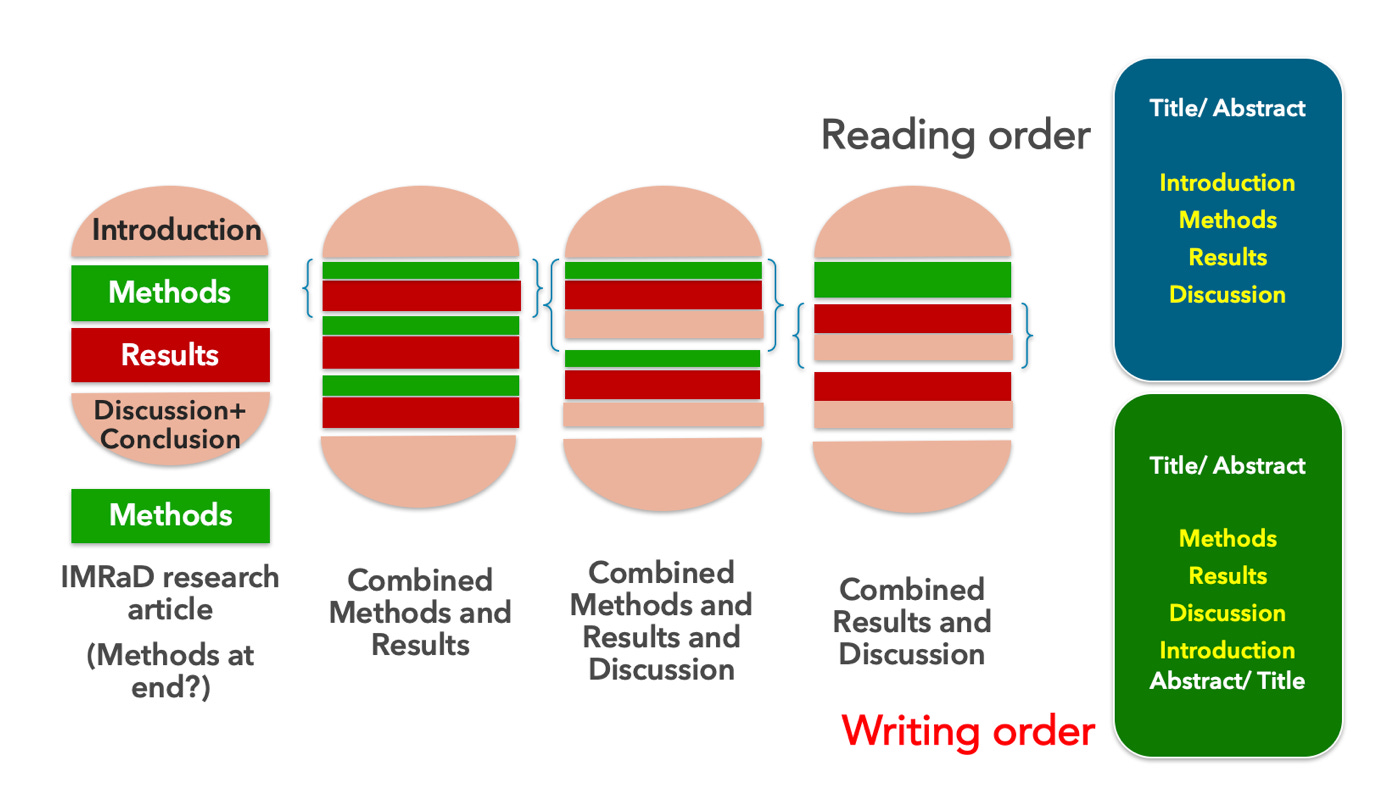Results (Results, and nothing but Results)
A picture is worth a thousand words. Structured like the Methods section, Results are written around figures ....
We’ve arrived at the Results section of your article. Here’s a top tip at this stage: writing the Results and Discussion sections of scientific articles becomes much, much easier if you have already decided two things before you start: (i) Your target journal, and; (ii) A structure, established in the Methods section.
The first of these is important because, as we have discussed, each journal is different and so the expected content of different sections will vary, sometimes a great deal. Results sections of shorter format journals, like Nature or Proceedings of the Royal Society, often run together with Discussion sections and strongly based around data presentation. Its important to remember that the Results section of your article presents the results of the study but does not attempt to interpret their meaning. This means that, just as with the Methods section, the trick here to writing a good Results section is knowing what information to include or exclude. Don’t present and describe all the raw data that you collected, for example, but rather summarize your data with text, tables and/or figures.
We’ll come back to the preparation of figures and tables in a later article, but often, one good thing to do before you start to write this section of your paper is to decide on your data presentation: Which figures and tables are you going to include? What are they going to look like? How many will you include? Again, such decisions are very often dictated by the style and length of papers in your target journal.
One rule of thumb here is that you can always use the text of the paper to state the results of your study, then refer the reader to a table or figure where they can see the data for themselves.
That’s all very nice, but how to get started writing this part of your paper? One very good trick is to follow the sections you already put in place in your Methods section. This is the second of the two things to have decided before you start to write the Results. Now, I’m not saying that you necessarily have to use subheadings and subdivide this part of your paper in the same way that you did for the Methods, but you can write paragraphs of text that follow the same order. This approach will help you to easily organize your thoughts; using a clear structure here that is already familiar to a reader means that the paper is also easier to follow. Remember: a scientific article tells a story just like any other piece of writing and so readers need to know where they are and where they are going as they read over your work.
Another rule here is to stick to the facts only in this section of your paper: order your thoughts around primary and secondary outcomes in the same order as in the Methods section and state clearly and simply what you found using words and numbers.
Here you are reporting just the results of your work. No interpretation: that comes later. ‘Interpretation’ and ‘Discussion’ mean almost the same thing in English. One of the most common mistakes people make when putting scientific articles together is to be too discursive in the Results section. Keep it simple and stick to the facts. There will be time to develop your thoughts later.





